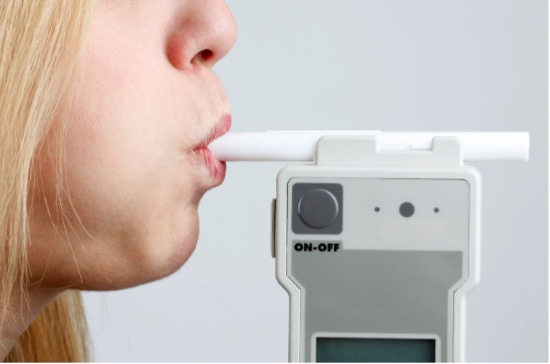Exhaled-Breath Test Shows Promise for Detection of Lung Cancer
July 23, 2024
Source: drugdu
 403
403
 Researchers are advancing the development of an exhaled-breath test to detect lung diseases, including lung cancer. Two pivotal studies published in the Journal of Extracellular Vesicles detail their success in isolating and analyzing lung biomarkers from human breath and utilizing animal models to further explore and possibly identify crucial markers for the early and non-invasive detection of metastatic lung tumors. While substantial efforts are needed to identify a spectrum of biomarkers and validate their clinical relevance for human patients, these publications provide a scientific framework for continued research.
Researchers are advancing the development of an exhaled-breath test to detect lung diseases, including lung cancer. Two pivotal studies published in the Journal of Extracellular Vesicles detail their success in isolating and analyzing lung biomarkers from human breath and utilizing animal models to further explore and possibly identify crucial markers for the early and non-invasive detection of metastatic lung tumors. While substantial efforts are needed to identify a spectrum of biomarkers and validate their clinical relevance for human patients, these publications provide a scientific framework for continued research.
The research by scientists at Hackensack Meridian Health (Edison, NJ, USA) focuses on capturing and characterizing extracellular vesicles (EVs), nanoparticles released by cells into fluids like blood and serum. Cancer cells release these particles abundantly, making them prime targets for early disease detection. The researchers have initiated biomarker discovery projects for several cancers, including lung, prostate, cervical, and bladder cancers, using liquid biopsies. They have developed a technology called EV-CATCHER that selectively isolates these nanoparticles from biofluids and employs next-generation sequencing to examine small-RNAs within the nanoparticles for non-invasive detection of lesions and tumors that could be developing within the body. The team is now applying the EV-CATCHER technology to isolate EVs from human exhaled breath, which carries biomarkers of lung disease, potentially transforming the diagnosis and monitoring of lung conditions without invasive lung sampling.
In their most recent study, they analyzed airway samples from 69 individuals, demonstrating that microRNA profiles in exhaled EVs matched those from deeper lung samples obtained through more invasive methods like bronchoalveolar lavages. In another pivotal study aimed at detecting lung cancer, they analyzed microRNA content in exhaled EVs collected from breath condensates of 18 individuals—12 healthy and six with stage-IV lung cancer. Their findings revealed distinct microRNA expression profiles in exhaled EVs that could differentiate between individuals with and without lung cancer. An earlier study with mouse models, published in March in the journal Extracellular Vesicles and Circulating Nucleic Acids, demonstrated the ability to detect microRNAs from human-derived tumor cells in exhaled breath within 1-2 weeks of injecting human cancer cells, using EV-CATCHER to capture tumor EVs from exhaled breath. Although further refinement of biomarker selection is necessary, the research indicates promising potential for diagnosing lung diseases, notably lung cancer, using this innovative approach.
“We envision that expanding our approach to study human primary and other secondary lung cancers, in adequately-powered animal studies, has the potential to identify relevant exhaled human EV biomarkers,” they wrote. “Furthermore, since EV-CATCHER can easily be customized to target surface markers of specific EV subpopulations, we foresee that using it to separate lung tumor cell-derived exhaled EVs from immune and innate cell-derived EVs may help further improve the selection of exhaled tumor EVs for the fine-tuned detection of different types of lung cancer.”
Source:
https://www.labmedica.com/molecular-diagnostics/articles/294801873/exhaled-breath-test-shows-promise-for-detection-of-lung-cancer.html
Read more on
- Multiple batches of quadrivalent influenza virus split vaccine have been sub-packaged and submitted for lot release approval; expected to be released to the market soon after approval December 12, 2025
- Ab&B Bio-Tech CO., LTD. JS Lyophilized Human Rabies Vaccine Initiates Phase III Clinical Trials December 12, 2025
- The ‘Sweetest’ HPV Vaccine Market is Gone | Haibin Interview December 12, 2025
- InnoCare Pharma announced that its first independently developed next-generation TRK inhibitor, zoletrazinib, has been approved for marketing in China December 12, 2025
- Is PD-1/VEGF dual antibody + ADC becoming the standard configuration? December 12, 2025
your submission has already been received.
OK
Subscribe
Please enter a valid Email address!
Submit
The most relevant industry news & insight will be sent to you every two weeks.



